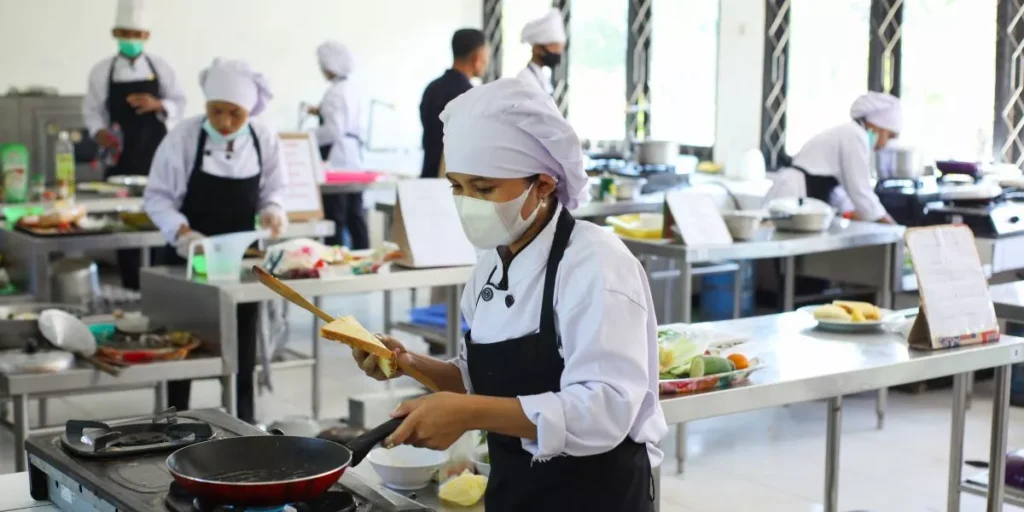
When it comes to ensuring food safety in your kitchen, avoiding cross-contamination is a critical aspect that requires your attention. By following simple yet crucial steps, you can significantly reduce the risk of harmful bacteria spreading from one food item to another during meal preparation. From the way you handle raw meats to the tools you use, each decision plays a vital role in maintaining a hygienic cooking environment. Stay tuned to discover practical tips that will help you safeguard your meals and the well-being of those you cook for.
Importance of Cross-Contamination Awareness
To prevent foodborne illnesses, understanding the importance of cross-contamination awareness is crucial in maintaining safe cooking practices. Cross-contamination occurs when harmful bacteria are transferred from one surface to another, typically through contact with raw meats, seafood, or poultry. By recognizing the significance of this risk, you can take proactive steps to minimize its occurrence in your kitchen.
One key aspect of cross-contamination awareness is the separation of raw and cooked foods. Keep raw meats, seafood, and poultry separate from ready-to-eat items such as fruits and vegetables. Designate specific cutting boards and utensils for raw proteins to avoid spreading bacteria to other foods. Additionally, always wash your hands thoroughly after handling raw products to prevent any potential contamination.
Understanding the importance of cross-contamination awareness not only safeguards your health but also ensures the well-being of those you cook for. By implementing these practices consistently, you can enjoy delicious meals without the worry of foodborne illnesses.
Proper Handling of Raw Meats
When handling raw meats, always ensure proper sanitation measures are in place to prevent cross-contamination. Start by designating specific cutting boards and utensils for raw meats only. This helps avoid contact between raw meat juices and other foods. Remember to wash your hands thoroughly with soap and warm water before and after handling raw meats to prevent the spread of bacteria.
Store raw meats in leak-proof containers or bags on the bottom shelf of the refrigerator to prevent drips onto other foods. When marinating meats, do so in the refrigerator and never reuse marinades that have come into contact with raw meat unless they’re boiled first to kill any bacteria.
During cooking, use a food thermometer to ensure meats reach the appropriate internal temperature to kill harmful bacteria. Clean and sanitize all surfaces, utensils, and cutting boards that have come into contact with raw meats to prevent the spread of pathogens. By following these practices, you can significantly reduce the risk of cross-contamination when handling raw meats.
Effective Cleaning and Sanitizing Techniques
Minimize the risk of cross-contamination by adopting effective cleaning and sanitizing techniques in your kitchen.
To start, always wash your hands thoroughly with soap and warm water before and after handling food, especially after touching raw meat, poultry, or seafood. Use separate cutting boards for raw meats and produce to prevent bacteria from spreading.
Clean and sanitize countertops, utensils, and equipment with hot, soapy water after each use. Consider using a bleach solution (1 tablespoon of bleach per gallon of water) to sanitize surfaces, especially after preparing raw meats.
Remember to replace dishcloths and sponges regularly, as they can harbor harmful bacteria if not kept clean. Additionally, ensure that your refrigerator is set below 40°F (4°C) and your freezer at 0°F (-18°C) to slow bacterial growth.
Essential Kitchen Tools for Prevention
Using the right kitchen tools is essential for preventing cross-contamination while cooking. Invest in separate cutting boards for raw meat, poultry, fruits, and vegetables to avoid spreading harmful bacteria. Color-coded boards can help you remember which board is designated for each type of food. Additionally, having a set of dedicated utensils for handling raw ingredients can further reduce the risk of cross-contamination.
Make sure to have a reliable food thermometer to ensure that meat is cooked to the proper internal temperature. This helps kill any bacteria present in the meat. It’s also beneficial to have multiple sets of dishcloths and towels to avoid wiping surfaces with a cloth that has been used for cleaning other areas.
Furthermore, using disposable gloves when handling raw meat or when you have any cuts or wounds on your hands can provide an extra layer of protection. These simple but essential kitchen tools can significantly decrease the chances of cross-contamination and keep your cooking environment safe and hygienic.
Kitchen Appliances














